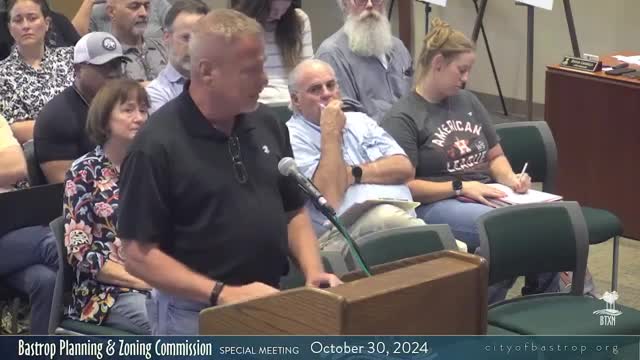City Council discusses $80M drainage and $100M street maintenance plans
October 30, 2024 | Bastrop, Bastrop County, Texas
This article was created by AI summarizing key points discussed. AI makes mistakes, so for full details and context, please refer to the video of the full meeting. Please report any errors so we can fix them. Report an error »

In a recent special meeting of the Bastrop Planning & Zoning Commission, city officials and community members gathered to discuss pressing infrastructure concerns and development strategies that could shape the future of the historic town. The atmosphere was charged with urgency as participants highlighted the challenges posed by increased urban density and aging utilities.
One of the key topics was the impact of infill development, particularly the addition of Accessory Dwelling Units (ADUs). Concerns were raised about the existing infrastructure, which many argued is not equipped to handle the additional strain from increased traffic and utility demands. "The sewer, water, and street infrastructure is not designed for today's type of use," one speaker noted, emphasizing that the original designs, created 50 to 80 years ago, did not account for modern delivery services and the surge in population density.
The discussion also touched on the city's $80 million drainage plan and a $100 million street maintenance plan, both of which are critical to addressing the current inadequacies in the system. Participants expressed that adding more developments without first upgrading these essential services could exacerbate existing problems, particularly in the historic areas of Bastrop.
Tree protection was another significant point of discussion. While there was broad support for enhancing tree protection measures, concerns about enforcement were raised. "We have tree protection in place, but it isn't enforced adequately," one speaker remarked, suggesting that increasing fines for violations could improve compliance and better preserve the community's green spaces.
Additionally, the meeting addressed the need for a community enrichment fund. This fund would require developers who cannot provide park space in their projects to contribute financially, helping to maintain the city's parks, which are already under strain from increased usage.
As the meeting progressed, it became clear that the commission faces a delicate balancing act: fostering growth while ensuring that the infrastructure can support it. The discussions underscored a collective desire to protect Bastrop's unique character and ensure that future developments enhance, rather than hinder, the community's quality of life. The implications of these discussions will likely resonate as the city moves forward with its planning and zoning initiatives.
One of the key topics was the impact of infill development, particularly the addition of Accessory Dwelling Units (ADUs). Concerns were raised about the existing infrastructure, which many argued is not equipped to handle the additional strain from increased traffic and utility demands. "The sewer, water, and street infrastructure is not designed for today's type of use," one speaker noted, emphasizing that the original designs, created 50 to 80 years ago, did not account for modern delivery services and the surge in population density.
The discussion also touched on the city's $80 million drainage plan and a $100 million street maintenance plan, both of which are critical to addressing the current inadequacies in the system. Participants expressed that adding more developments without first upgrading these essential services could exacerbate existing problems, particularly in the historic areas of Bastrop.
Tree protection was another significant point of discussion. While there was broad support for enhancing tree protection measures, concerns about enforcement were raised. "We have tree protection in place, but it isn't enforced adequately," one speaker remarked, suggesting that increasing fines for violations could improve compliance and better preserve the community's green spaces.
Additionally, the meeting addressed the need for a community enrichment fund. This fund would require developers who cannot provide park space in their projects to contribute financially, helping to maintain the city's parks, which are already under strain from increased usage.
As the meeting progressed, it became clear that the commission faces a delicate balancing act: fostering growth while ensuring that the infrastructure can support it. The discussions underscored a collective desire to protect Bastrop's unique character and ensure that future developments enhance, rather than hinder, the community's quality of life. The implications of these discussions will likely resonate as the city moves forward with its planning and zoning initiatives.
View full meeting
This article is based on a recent meeting—watch the full video and explore the complete transcript for deeper insights into the discussion.
View full meeting
